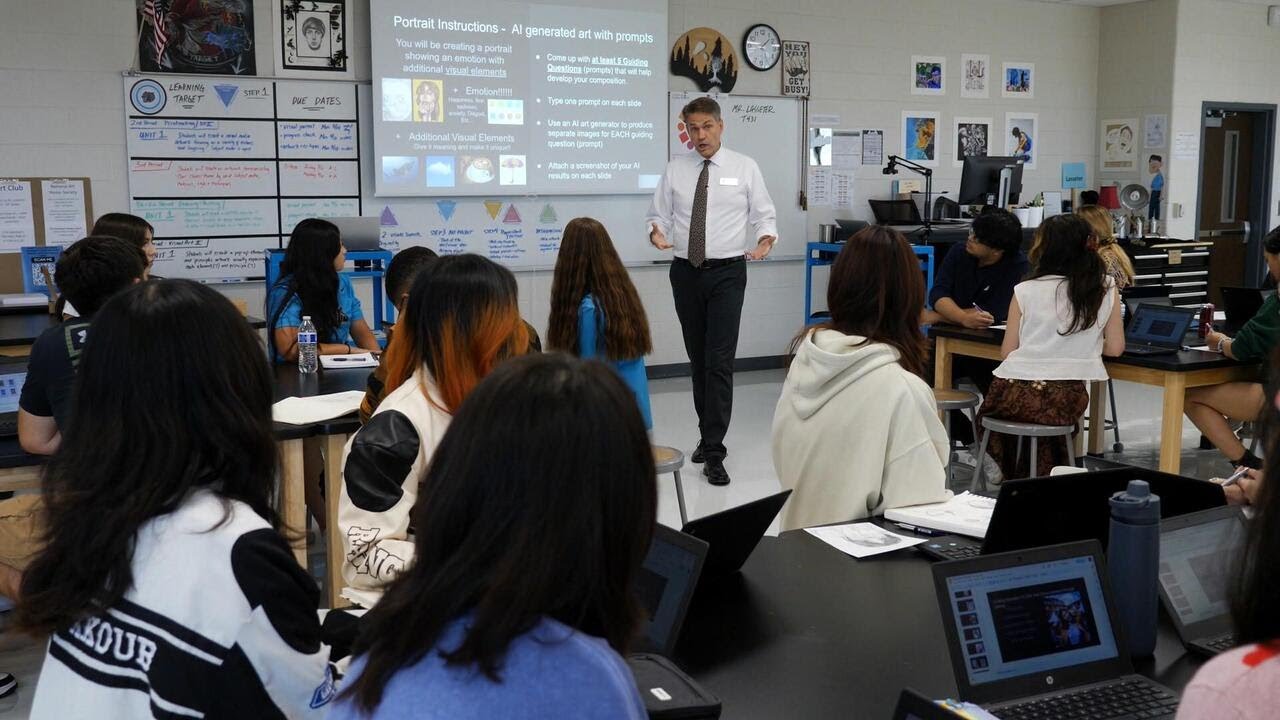AI is increasingly being integrated into classrooms to support personalized learning and reduce teachers’ workloads, with initiatives like a major partnership training educators to use AI responsibly. While AI offers valuable tools, experts emphasize the importance of maintaining critical thinking skills and ensuring technology complements rather than replaces the essential human connection in education.
The rise of artificial intelligence (AI) in classrooms is sparking a significant debate among educators, students, and tech experts. Advocates believe AI can be a valuable tool for both teachers and students, enhancing learning experiences and easing teachers’ workloads. However, critics worry that reliance on AI might discourage students from developing critical thinking skills and independent thought. Nancy Chen explores this complex issue by speaking with teachers and a tech executive, highlighting the evolving role of AI in education and a new partnership aimed at training teachers to effectively integrate AI into their classrooms.
In a New Jersey fifth-grade classroom, teacher Jerome demonstrates how AI tools are already being used weekly to support learning. He emphasizes the importance of finding what works best for individual students, noting that AI can provide multi-sensory learning experiences, such as combining reading with audio. Jerome also teaches students about AI’s limitations, encouraging them to critically evaluate AI responses and understand that AI is not infallible. This approach fosters AI literacy, helping students become discerning users of technology rather than passive consumers.
A major development in AI education is a partnership between Microsoft, OpenAI, Anthropic, and the American Federation of Teachers (AFT), aimed at training hundreds of thousands of teachers across the United States. Microsoft President Brad Smith highlights the potential for AI to empower teachers by saving time on lesson planning and providing valuable insights. Surveys indicate that teachers using AI save an average of nearly six hours per week. However, concerns remain about cheating and a decline in critical thinking skills if AI is misused, underscoring the need for responsible implementation.
Critics like former teacher and AFT member Lois Winer argue that the focus should be on improving teachers’ working conditions rather than relying on tech companies to solve educational challenges. She stresses that education should remain in the hands of teachers, with technology serving as a supportive tool rather than a replacement. Tech leaders echo this sentiment, advocating for tools that empower educators and allow school districts to decide how best to integrate AI into their curricula.
The $23 million investment in AI training for teachers, including virtual and in-person sessions in New York City, reflects a commitment to balancing innovation with caution. The AFT president emphasizes that the human connection between teachers and students is irreplaceable, but with sensible guidelines, AI can enhance teaching and learning. Since the launch of ChatGPT in late 2022, AI adoption in classrooms has surged, with nearly 85% of teachers using AI in some capacity. The consensus is that while AI can save time and support educators, it is crucial to maintain common-sense guardrails to ensure students continue to develop critical thinking skills.
